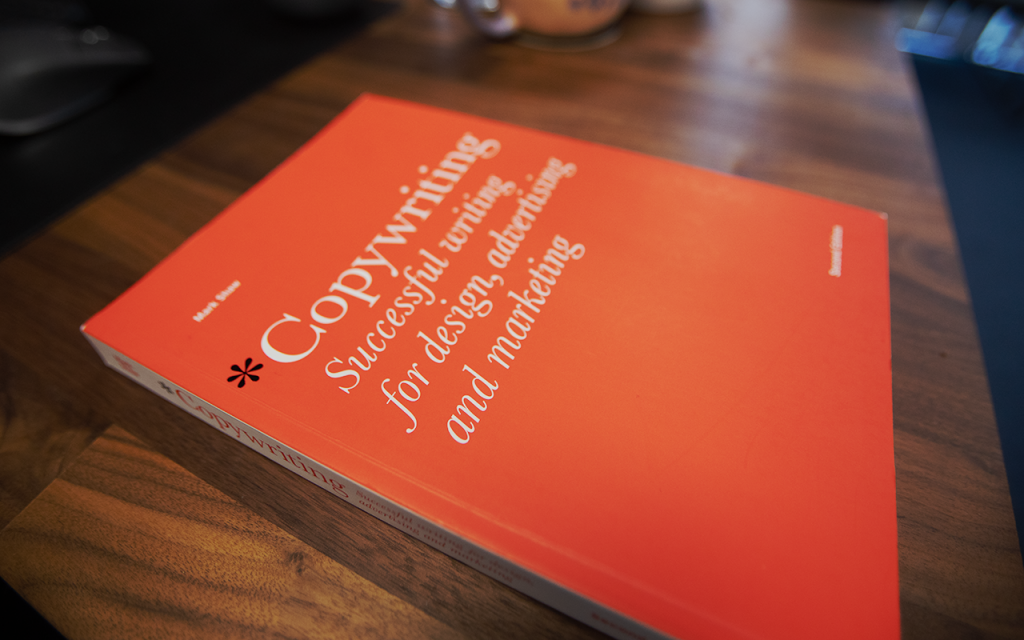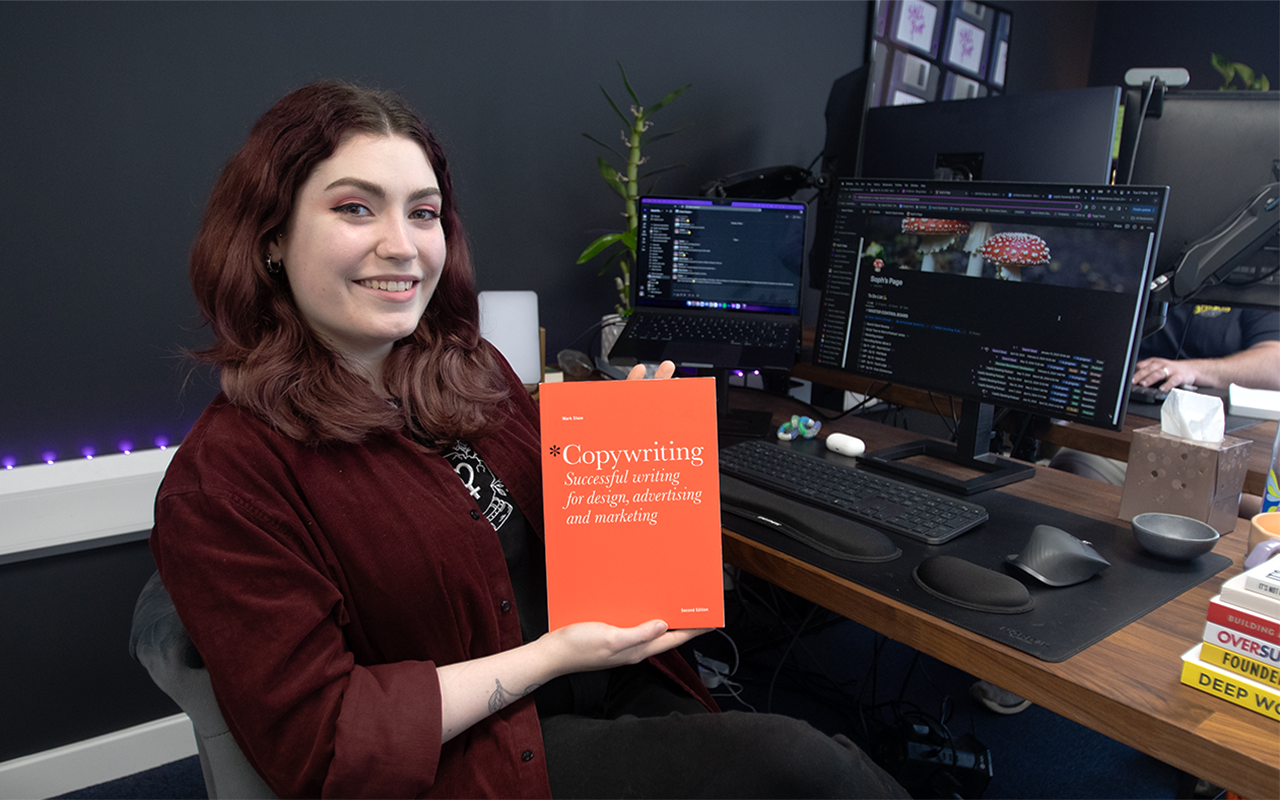This instalment of Soph Reads Stuff has been over three months in the making, and that’s because I’ve been tackling one of the most complex books yet; Copywriting: Successful writing for design, advertising and marketing. This book is like a copywriting bible. In fact, it’s packed with so many do’s and don’ts that it took me right back to Sunday School at Yateley Baptist Church. It’s Mark Shaw’s masterpiece, but I’ve done it again and only gotten the second edition, not the third edition that was released in 2022. Apparently, I do not learn. But you can!
With a pleasing 222 pages of content, Mark has handed down a career’s worth of wisdom, and it’s one hell of a book. Its copywriting-bible vibes are actually in the layout as well, with the main text indented on the majority of pages, with quotes or other annotations added to the side, just like you’d see in a study Bible. It even lays down the law for copywriters. Mark says, “Your rules are simple: never miss your deadline and never compromise the quality and integrity of your work.” Sounds simple, right?
Regardless of your religious views, Copywriting is definitely one book you won’t want to miss if you’re in marketing. It’s a super-detailed handbook for copywriting, much like Everybody Writes, but specifically for those of us who specialise in writing rather than wider marketing.
So, before I ramble on too much, let’s get down to the details.
What’s inside?
My initial bullet point list of notes for this blog was around 600 words long – that’s how much great stuff there is packed into the neon-yellow pages of Copywriting. Don’t worry, they’re not all yellow. Most of them are white, with case studies and interviews on a lovely dove grey, while summaries, action points and exercises are highlighted on the odd sun-bright page. It’s an interesting format and definitely demands attention.
Despite the dynamic formatting, this book is a bit of a slog to get through. Not because it’s boring – not by any stretch of the imagination – but because there is so much information to digest on each page. Mark explains and illustrates every point incredibly well, with case studies and clear examples to back up what he says. It’s also fascinating to see a breakdown of why some of the most famous ads in history were so successful.
In Copywriting, Mark sets out the best practices for everything from website copy to catalogue design. There’s a great section on developing a tone of voice guide, including tips like creating a ‘word bank’ or company dictionary that includes specific words or phrases that encapsulate the feeling that you want consumers to get from you. He also touched on a few other basic skills for copywriters, like how to get a good brief from your clients. The whole book is like a crash course on my career.
Another thing I loved about it was that the Copywriting isn’t all from Mark’s perspective. The interviews I mentioned earlier are from other influential copywriters, editors, and brand managers, including people from Land Rover and The LUSH Times – a publication that I hoarded as a 9-year-old obsessed with all things cosmetics. It delved into the use of community content and product features that made me want to be part of the publication one day, even as a preteen.

The chapters on company newsletters and catalogue writing were actually my favourites, which came as a surprise given how much I enjoy writing websites in my day job. The case study on Argos catalogues took me right back to my childhood too. Does anyone else remember how magical it was when the Christmas catalogue arrived? I’d spend weeks hopefully circling all the Polly Pocket sets and eyeshadow palettes I wanted to find under the tree.
There is so much else I could talk about from this book because each page is packed with copywriting gold dust. It even ends with a fascinating look at persuasive copywriting through the lens of bank robbers’ notes. They’re snippets of microcopy that have to be incredibly compelling and made for a fun twist at the end of an otherwise quite dense book.
The main downside to Copywriting is its heaviness. Because it’s about, for, and by copywriters, it uses very concise wording, which may sound great, but it means that there’s a lot of information packed into a relatively short space with no space to breathe between it. That doesn’t make for the most exciting read and often takes a lot of time to process.
It also includes some problematic language that could be offensive for some readers – maybe because of the different time it was written in – but it wasn’t the nicest read. Hopefully, that’s been taken out in the latest edition.
My recommendation:
Copywriting is a great resource for anyone who writes regularly. Like Everybody Writes, it’s ideal for referring to when you’re in the middle of a specific writing task or for brushing up on some best practices when you shift focus during your career.
I did find this one slightly harder to rate as it’s so information-rich and doesn’t have a narrative I could connect to like some of the other books featured on the blog. Normally, my ratings are fairly emotional reactions to the books I’ve read, but this one didn’t really give me any feelings. However, other than a few language choices, I really had very little to criticise, so I’ve settled on a very respectable four stars.
Rating: 💜💜💜💜🤍
TL;DR
This is a really solid reference book with plenty of case studies and interviews to give life to the information. It is a pretty dense book because it’s packed with practical information, but as it’s designed to be a guidebook rather than a novel, I think it’s still well worth a read.
Want to chat about books? Find me on LinkedIn –> Sophie Colclough 🥰

